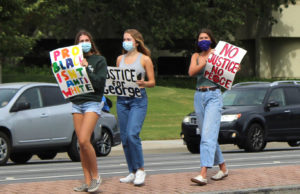Teacher’s strike to see change
On March 8, Minneapolis teachers were not in their classrooms with students. Instead, many went out on the streets protesting to bring change to what they saw as flaws in their state’s educational system; the last teacher strike in Minneapolis occurred in 1970. As the protests continue, students set foot into their tenth day without school.
After grueling months of conversation between the teacher union and the city, teachers of Minneapolis continued to voice their concerns over large class sizes, low pay, and a lack of student mental health services.
The average salary in Minneapolis is $56,682. However, the current minimum salary for Minneapolis teachers is 24k a year, and Minneapolis teachers are now hoping for that number to rise to 35k. In addition to a higher salary, teachers would also like to see a more racially diverse set of educators.
As the pandemic’s effects slowly begin to taper off, more and more students are looking to receive mental health support through a school environment. With the current 500-to-1 ratio of students to counselors in the Minneapolis school district, counselors are receiving double the suggested number of students to supervise. Teachers hope to raise awareness, and hire more counselors, support workers, and psychologists to provide more attentive assistance to students.
In a pursuit to find a compromise between the school district and workers union, a new and final plan has been proposed by the school district which includes a 5% to 12.5% wage increase for teachers with up to six years of experience in the first year of the plan alongside a $2,000 bonus. The remaining teachers would receive a 2% wage increase. In the following year, there would be a 2.25% wage increase with a $1,000 bonus. The Minneapolis teachers’ pursuit towards just education has shined a light on these issues and resulted in action in other school districts.
While Minneapolis has about 29,000 students and 3,265 teachers, St. Paul has roughly 34,000 pupils and 3,250 educators, making both school districts some of the largest in population. Union officials in both Minneapolis and St. Paul said the issues in discussion were very similar. The St. Paul teachers union said their tentative agreement includes maintains caps on class sizes, increased mental health support and pay increases.
State mediators sought to facilitate the negotiations between administrators and union leaders in both districts. With as much as 78 percent of voting union members and support staff votes in favor of a strike, a deal involving teacher bonuses, raises and class-size limitations avert further action. According to the St. Paul Public Schools and the St. Paul Federation of Educators, this deal featured $3,000 bonuses, 2 percent raises and modest class-size reductions.
Although teachers are hoping to bring long term change, many parents are growing more concerned regarding the missed school days. As the protests persist, some parents are even considering moving their children to a different school district while school officials determine how they are going to make up for the lost educational time.


